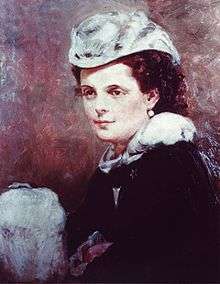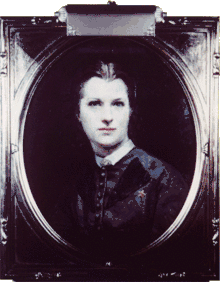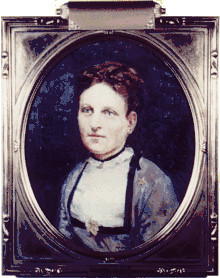P.E.O. Sisterhood
The P.E.O. Sisterhood (Philanthropic Educational Organization) is an international women's organization of about 230,000 members, with a primary focus on providing educational opportunities for female students worldwide. The Sisterhood is organized with chapters throughout the United States and Canada, headquartered in Des Moines, Iowa.
About P.E.O.
P.E.O. (Philanthropic Educational Organization) is passionate about its mission: promoting educational opportunities for women. The Sisterhood has six philanthropic projects, which include Cottey College, an independent, liberal arts and sciences college for women. Five programs provide assistance to women for higher education: P.E.O. Educational Loan Fund, P.E.O. International Peace Scholarship Fund, P.E.O. Program for Continuing Education, P.E.O. Scholar Awards, and P.E.O. STAR Scholarship. P.E.O. is headquartered in Des Moines, Iowa.
To date (2017) more than $304 million has been awarded to over 102,000 women from the organization's six educational philanthropies. P.E.O. has awarded Educational Loan Fund (ELF) dollars totaling more than $185.8 million, International Peace Scholarships (IPS) are more than $36 million, Program for Continuing Education (PCE) grants are more than $52.6 million, P.E.O. Scholar Awards (PSA) are more than $23 million and P.E.O. STAR Scholarships (STAR) are more than $6.6 million. In addition, 8,500 women have graduated from Cottey College.
Cottey College
Cottey College (est. 1884) is an independent, liberal arts and sciences college for women. Located in Nevada, Missouri, its residential student capacity of 350 students typically represents 40 states and 25 countries annually.[1] Cottey is wholly owned by the P.E.O. Sisterhood.
P.E.O. Educational Loan Fund
Educational Loan Fund (ELF) is a revolving loan fund established in 1907 to lend money to qualified women students to assist them in securing a higher education.
P.E.O. International Peace Scholarship
P.E.O. International Peace Scholarship (IPS) Fund was established in 1949 to provide scholarships for international women students to pursue graduate study in the United States and Canada.
P.E.O. Program for Continuing Education
P.E.O. Program for Continuing Education (PCE) was established in 1973 to provide need-based grants to women in the United States and Canada whose education has been interrupted and who find it necessary to return to school to support themselves and/or their families.
P.E.O. Scholar Awards
P.E.O. Scholar Awards (PSA) was established in 1991 to provide substantial merit-based awards for women of the United States and Canada who are pursuing a doctoral level degree at an accredited college or university.
P.E.O. STAR Scholarship
The P.E.O. STAR Scholarship was established in 2009 to provide scholarships for exceptional high school senior women to attend an accredited postsecondary educational institution in the United States or Canada in the next academic year.
Name
For much of its history, the meaning of "P.E.O." in the organization's name was a closely guarded secret and was never made public.[2]
In 2005, the Sisterhood unveiled a new logo and an “It’s OK to Talk About P.E.O.” campaign, seeking to raise the public profile of the organization while maintaining its traditions of secrecy.[2][3] Before then, the organization's avoidance of publicity, and the secrecy of their name, caused it to be considered it a "secret society'.[4]
In 2008, the Sisterhood revised its website to indicate that "P.E.O." now publicly stands for "Philanthropic Educational Organization". However, the Sisterhood acknowledges that "P.E.O." originally had a different meaning that continues to be "reserved for members only", and so the public meaning is not the only one.[5]
History
P.E.O. was originally rooted in the philosophy and institutions of the Methodist Church which actively promoted Women's Rights and Education in America during the 1800s. "By 1844, the number of Methodist related colleges was second only to those affiliated with Presbyterian bodies. Between 1832 and the Civil War, thirty-four colleges were established by the Methodists and by 1880 that number had risen to forty-four."[6]
The first chapter of 1869 became many and in 1883 local chapters of the P.E.O. founded a "Supreme Chapter" to coordinate the Sisterhood on a national level.[7] The first International chapter was established in Vancouver, British Columbia, Canada in 1911.[8]
"Although [P.E.O.] began as a collegiate organization, in 1902 it became a community-based one. The collegiate chapter at Iowa Wesleyan became Alpha Xi Delta’s second chapter. P.E.O. chapters spread across the country from Midwestern roots... P.E.O. existed [quietly] and kept a very low profile in communities all over North America. Chapters [were modest] about the good works they were doing. That changed in 2005, with a new logo and the introduction of an “It’s OK to Talk About P.E.O.” campaign. On January 21, Founders’ Day, P.E.O.s are encouraged to wear their P.E.O. emblems, the star shaped pins members receive."[9]
Founders
The Sisterhood was founded January 21, 1869,[10] as a seven-member sorority at Iowa Wesleyan College in Mount Pleasant, Iowa. It is the second sorority to be founded in the U.S.[11] The founding members were Mary Allen [Stafford] (1848–1927), Ella Stewart (1848–94), Alice Bird [Babb] (1850–1926), Hattie Briggs [Bousquet] (1849–77), Franc Roads [Elliott] (1852–1924), Alice Virginia Coffin (1848–88), and Suela Pearson [Penfield] (1851–1920).[12] The sisterhood was founded after only some of the seven girls were asked to join I. C. Sorosis, a sorority organized in Mount Pleasant a month earlier, and they would not join without the others.[12][13]
More than five decades after they began the P.E.O. oil portraits of the original seven founders were commissioned from Marion Dunlap Harper by the P.E.O. organization. Originally unveiled in P.E.O. Memorial Hall in Mount Pleasant, Iowa on September 23, 1929, the paintings were composites sourced from a collection of sketches, portraits and photographs. The paintings of Alice Coffin and Franc Roads are based on earlier photographs taken at the same studio and they are wearing the same cape.[14]
 Alice Bird Babb (May 8, 1850 - November 21, 1926) |  Mary Allen Stafford (December 30, 1848-July 10, 1927) |  Franc Roads Elliot (February 10, 1852 - August 9, 1924) |  Suela Pearson Penfield (August 24, 1851 - September 20, 1920) |
 Ella Stewart (May 8, 1848 - December 12, 1894) |  Hattie Briggs Bousquet (October 10, 1849 - June 22, 1877) |  Alice Coffin (March 29, 1848 - July 28, 1888) |
Membership
In 1966 the Sisterhood had 130,000 members. At the time membership was open to women over 18, who believed in God and had lived at their present address for a least a year. It was said to appeal to "Protestant women of some social standing and college education."[15] Although always officially nonsectarian, P.E.O. has evolved over recent generations into a deliberately diverse, community-based organization with nearly 6,000 chapters and almost a quarter of a million members. P.E.O. has chapters in each of the 50 United States, District of Columbia and in six Canadian provinces.
The P.E.O. wish to be better known for what they are: a group that serves women worldwide and a diverse sisterhood that welcomes women of all races, religions and backgrounds. According to their own website the P.E.O. does "not discriminate against any woman based on age, ethnicity, religion or education. Our sisterhood is based on friendship and mutual respect. P.E.O. is not political nor is it a political action group."
The Sisterhood's official flower is the marguerite.[7]
Notable Members
Ritual
Membership in P.E.O. is by invitation but is not secret. Meetings are opened with prayers and with inspirational readings chosen by members, but P.E.O. meetings and activities do not reference, require or promote any particular religion or religious practice. While meetings do follow a structured agenda, these meetings and activities do not in any way involve religious rites and therefore do not meet the definition of 'ritualistic'. Meetings for members are highly guarded and a secret password must be used to prove membership. The secret password is closely guarded by the sisterhood.
References
- ↑ P.E.O. International Sisterhood, About Cottey College, retrieved 25 February 2015
- 1 2 Talking P.E.O.: How does an organization introduce a new identity to the public? By first reassuring itself that “It’s OK” to change. Archived 2015-03-13 at Archive.is (article by Sheree Clark in Feb./Mar. 2006 issue of Dynamic Graphics magazine)
- ↑ Fox, Joanne (6 January 2011). "P.E.O. is no secret". Sioux City Journal. Retrieved 14 March 2015.
- ↑ "Hide it Under a Bush, Hell No: Women's Volunteer Associations as Adult Education Initiatives" Patricia Moran (2007). ProQuest.
- ↑ Frequently Asked Questions
- ↑ Moudry, Susan (October 2013). ""A SOCIETY OF OUR OWN": METHODISTS, COEDUCATION AND THE FOUNDING OF P.E.O.". Methodist History. 52:1: 33–42.
- 1 2 Preuss p.396
- ↑ Clapp p.289
- ↑ Becque, Fran. "P.E.O. Sisterhood Turns 146". Retrieved 21 January 2015.
- ↑ Clapp, Stella. Out Of The Heart: A Century of P.E.O. 1869-1969. The P.E.O. Sisterhood. p. 1.
- ↑ Wolf-Wendel, Lisa; Sheila Pedigo (1999). "Two-Year Women's Colleges". In Barbara K. Townsend. Two-Year Colleges for Women and Minorities. Routledge. p. 57. ISBN 0-8153-3173-8.
- 1 2 Clapp p.1
- ↑ Axelrod, Alan International Encyclopedia of Secret Societies and Fraternal Orders New York; Facts on File, inc 1997, p.196
- ↑ Clapp, Stella (1968). Out Of The Heart: A Century of P.E.O. 1869-1969. 3700 Grand Avenue, Des Moines, Iowa: THE P.E.O. SISTERHOOD.
- ↑ Whalen, Willian J. Handbook of Secret Organization Milwaukee: The Bruce Publishing Co. 1966; Second printing 1967, p.130
- 1 2 3 4 5 6 7 8 9 10 Binheim, Max; Elvin, Charles A (1928). Women of the West; a series of biographical sketches of living eminent women in the eleven western states of the United States of America. Retrieved 8 August 2017.
